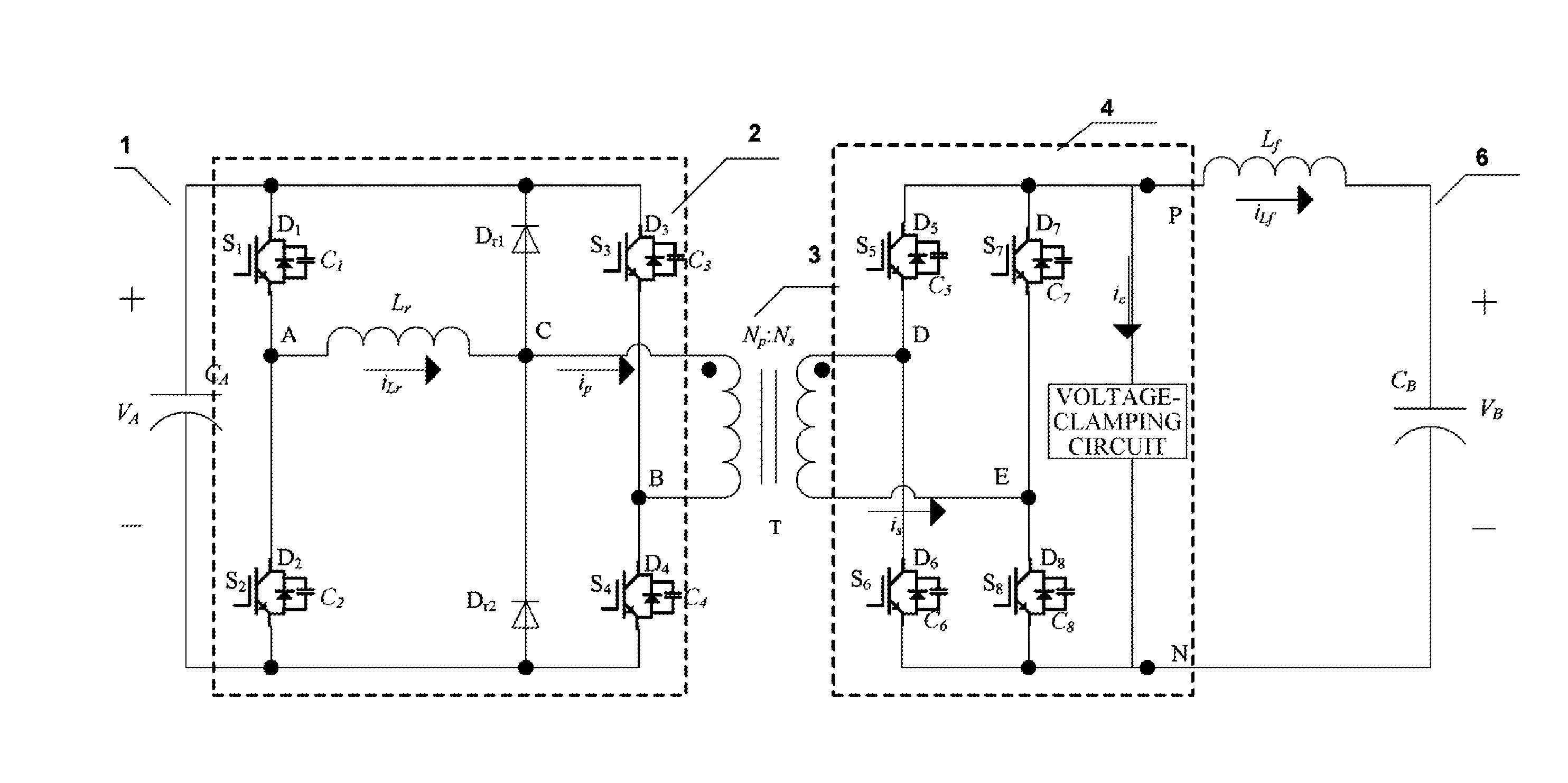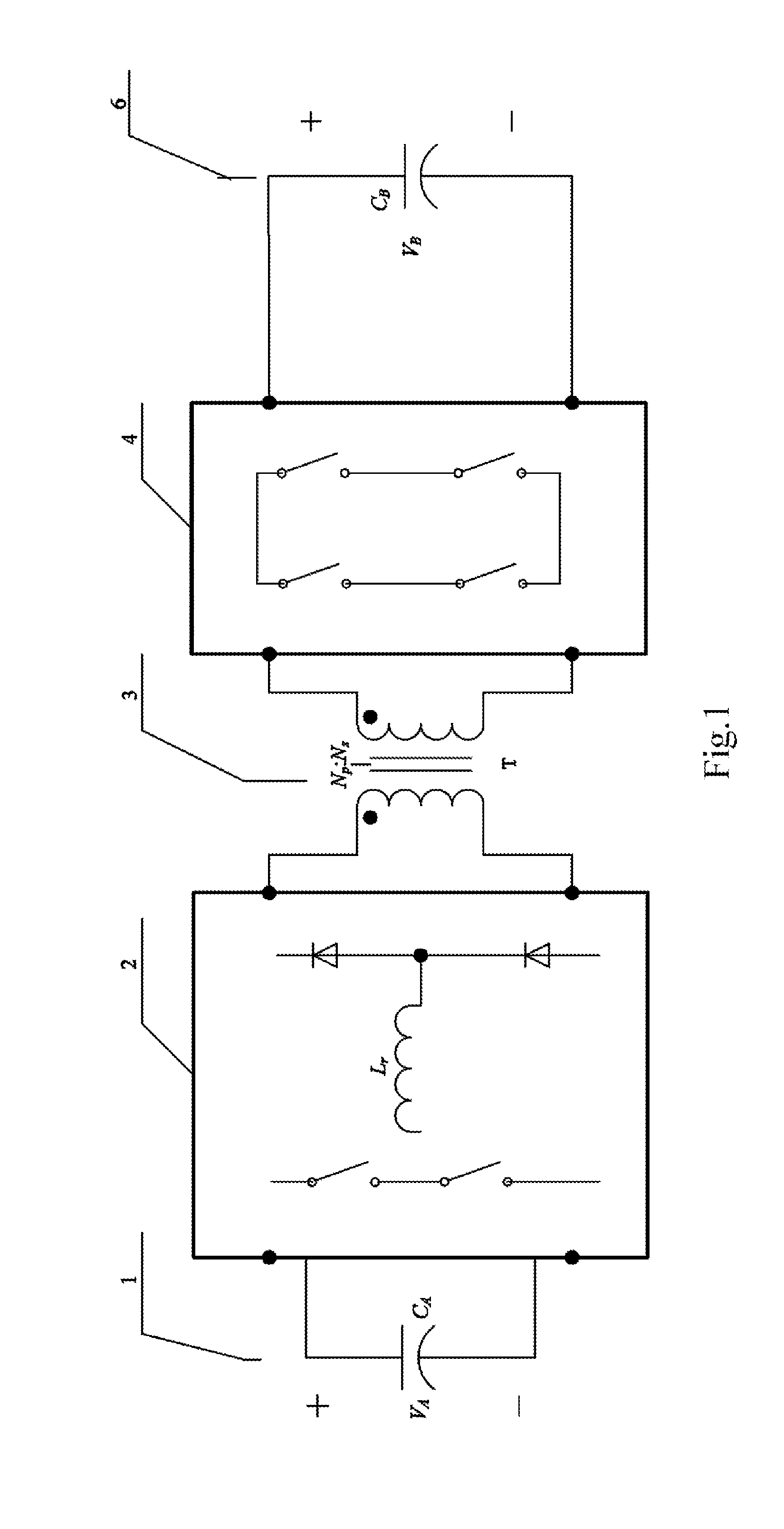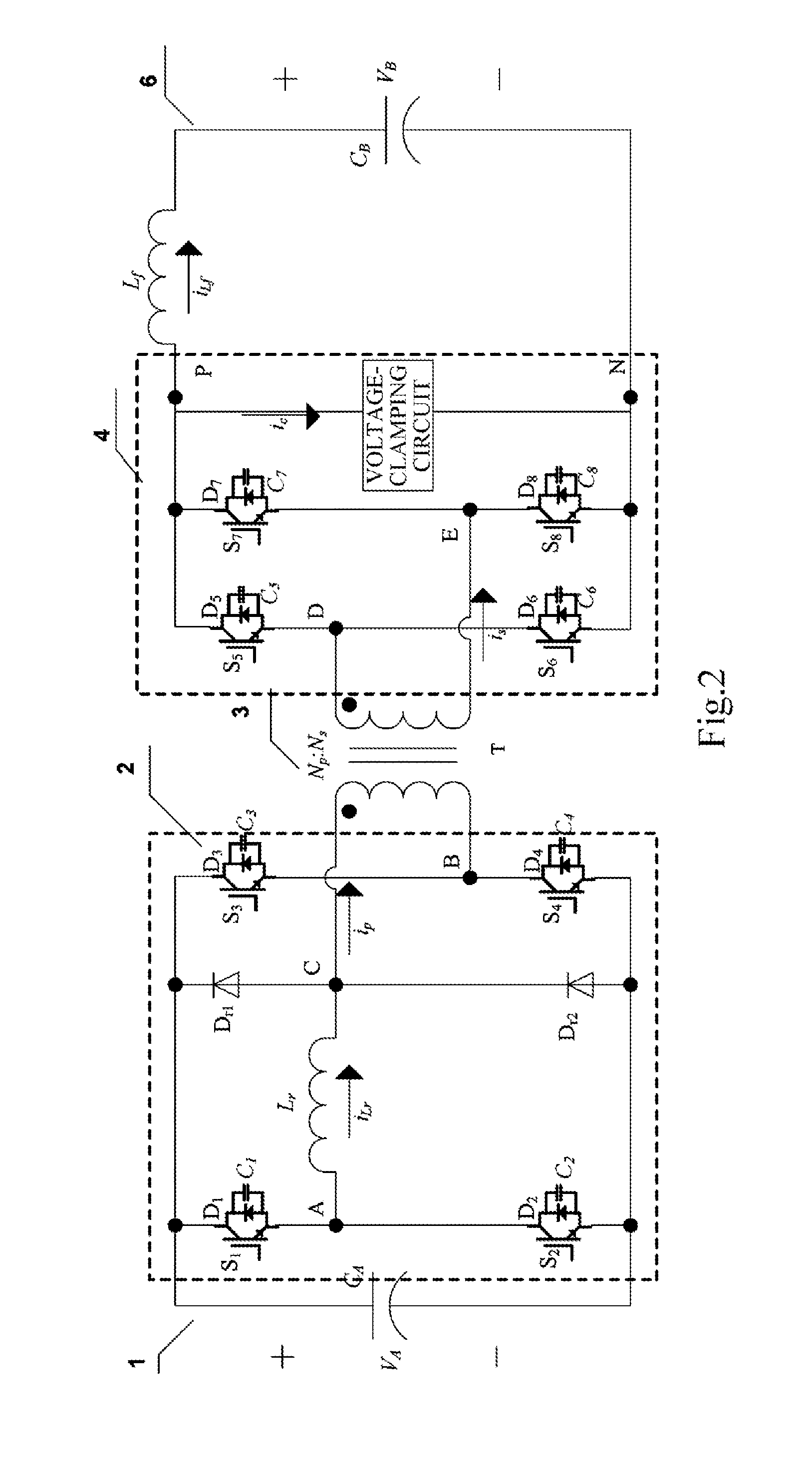Bi-directional dc-dc converter
a converter and bi-directional technology, applied in the field of converters, can solve the problems of affecting the transfer efficiency of the transformer to a certain extent, increasing the current of the switching components in the bridge arms, and confined voltage spikes, so as to improve the transformer efficiency and soft-switch the switching components
- Summary
- Abstract
- Description
- Claims
- Application Information
AI Technical Summary
Benefits of technology
Problems solved by technology
Method used
Image
Examples
embodiment 1
[0046]Hereafter, a first embodiment of the present disclosure will be described with reference to FIGS. 2-39.
[0047]FIG. 2 shows a circuit diagram of a bi-directional DC-DC converter according to the first embodiment of the present disclosure.
[0048]In the first embodiment of the present disclosure, the bi-directional DC-DC converter includes a primary-side DC port 1, a primary-side inverting / rectifying module 2, an isolated transformer 3, a secondary-side rectifying / inverting module 4, and a secondary-side DC port 6.
[0049]As shown in FIG. 2, the primary-side inverting / rectifying module 2 includes a first bridge arm and a clamping circuit. The first bridge arm is composed of switching components S1 and S2 connected in series, and receives a voltage VA from the primary-side DC port via a capacitor CA at high-pressure side which is connected in parallel with the first bridge arm. The clamping circuit includes a resonant inductor Lr and a clamping bridge arm composed of semiconductor dev...
embodiment 2
[0144]In the first embodiment, the operation states of the circuit topology in which two terminals of the isolated transformer at the primary side are connected to the lagging leg (that is, the first bridge arm composed of the switching components S1 and S2 in the primary-side inverting / rectifying module) has been described. In the second embodiment of the present disclosure, the isolated transformer may be connected to a leading leg, as shown in FIG. 40. The bi-directional DC-DC converter in the present embodiment has the circuit connections substantially identical to those in the first embodiment as shown in FIG. 2, except that the first bridge arm is composed of the switching components S3 and S4 connected in series, the second bridge arm is composed of the switching components S1 and S2 connected in series, and the second bridge arm is coupled to two terminals of the isolated transformer T at the primary side as a leading leg. Since the first bridge arm and the second bridge arm...
embodiment 3
[0181]FIG. 43 shows a circuit topology diagram of a bi-directional DC-DC converter according to a third embodiment of the present disclosure. As shown in FIG. 43, the circuit topology of the bi-directional DC-DC converter in this embodiment is substantially identical to that in the bi-directional DC-DC converter shown in FIG. 2 except the primary-side inverting / rectifying module. In this embodiment, in addition to the first bridge arm and the clamping circuit shown in FIG. 2, the primary-side inverting / rectifying module further includes a capacitor bridge arm composed of capacitors C3 and C4 connected in series. The capacitor bridge arm, the first bridge arm, and the clamping bridge arm are connected in parallel with the DC port 1 at the primary side. One terminal of the primary winding of the transformer is connected to a midpoint C of the clamping bridge arm, and the other terminal thereof is connected to a midpoint B of the capacitor bridge arm.
[0182]Since the main circuit topolo...
PUM
 Login to View More
Login to View More Abstract
Description
Claims
Application Information
 Login to View More
Login to View More - R&D
- Intellectual Property
- Life Sciences
- Materials
- Tech Scout
- Unparalleled Data Quality
- Higher Quality Content
- 60% Fewer Hallucinations
Browse by: Latest US Patents, China's latest patents, Technical Efficacy Thesaurus, Application Domain, Technology Topic, Popular Technical Reports.
© 2025 PatSnap. All rights reserved.Legal|Privacy policy|Modern Slavery Act Transparency Statement|Sitemap|About US| Contact US: help@patsnap.com



